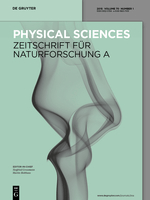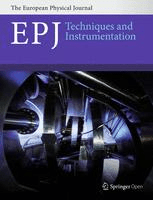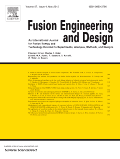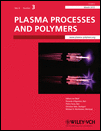
Plasma
metrics 2024
Advancing the Frontiers of Plasma Science
Introduction
Plasma is a leading open-access journal published by MDPI, devoted to the exploration and advancement of knowledge in the fields of engineering, physics, and materials science. Established in 2018, this journal provides a vital platform for researchers, professionals, and students to disseminate original findings and critical reviews related to plasma science, its applications, and its interdisciplinary aspects. With an E-ISSN of 2571-6182, Plasma actively promotes open access to ensure that research is widely accessible, reinforcing its commitment to accelerating scientific communication and collaboration across global communities. The journal enjoys respectable rankings in Scopus, with a notable position in Engineering, Physics and Astronomy, and Materials Science categories, making it an essential resource for those seeking to remain at the forefront of plasma research. Covering a range of topics until 2024, Plasma invites cutting-edge contributions that push the boundaries of understanding in this dynamic field.
Metrics 2024
 -
- 1.90
1.90 -
- -
-Metrics History
Rank 2024
Scopus
IF (Web Of Science)
JCI (Web Of Science)
Quartile History
Similar Journals

PLASMA CHEMISTRY AND PLASMA PROCESSING
Harnessing Plasma Chemistry for Transformative ApplicationsPLASMA CHEMISTRY AND PLASMA PROCESSING, published by SPRINGER, is a premier journal dedicated to advancing the field of plasma chemistry and its applications in processing technologies. Established in 1981, this journal has attained a strong impact in its field, reflecting its Q2 rankings in several categories including Chemical Engineering, Chemistry, and Condensed Matter Physics. It serves as a crucial platform for researchers, professionals, and students aiming to explore innovative plasma-based techniques and solutions for diverse applications, including materials synthesis and surface engineering. Through rigorous peer-reviewed articles and comprehensive studies, this journal underscores the significance of plasma processes in contemporary scientific and industrial landscapes, fostering knowledge exchange and emerging trends up to the year 2024. With its strategic focus on cutting-edge research, PLASMA CHEMISTRY AND PLASMA PROCESSING remains an essential resource for those committed to the enhancement and evolution of plasma technologies.

BRAZILIAN JOURNAL OF PHYSICS
Bridging Gaps in Scientific UnderstandingBRAZILIAN JOURNAL OF PHYSICS, published by SPRINGER, is a prominent platform dedicated to the dissemination of research within the realm of physics and astronomy. With an ISSN of 0103-9733 and E-ISSN of 1678-4448, this esteemed journal has been contributing to the field since its inception in 1996, and it continues to be pivotal in showcasing innovative studies and breakthroughs. The journal is categorized in the Q4 quartile for the year 2023, reflecting a dedicated focus on advancing knowledge across a variety of disciplines, particularly in general physics and astronomy, where it ranks 126th out of 243 in Scopus rankings. Although it currently does not operate under an open-access model, it remains an invaluable resource for researchers, professionals, and students eager to enhance their understanding of complex physical principles and developments. The journal is committed to promoting high-quality research, bridging gaps in knowledge, and fostering collaboration within the global physics community.

ZEITSCHRIFT FUR NATURFORSCHUNG SECTION A-A JOURNAL OF PHYSICAL SCIENCES
Pioneering Insights in Theoretical ChemistryZEITSCHRIFT FUR NATURFORSCHUNG SECTION A - A JOURNAL OF PHYSICAL SCIENCES is a distinguished journal published by Walter de Gruyter GmbH, based in Germany, that serves as a vital platform for research in the realms of mathematical physics, physical and theoretical chemistry, and broader disciplines within physics and astronomy. Established in 1946, this journal has been a cornerstone for scientists and researchers, providing rigorous peer-reviewed articles that push the boundaries of knowledge in physical sciences. With a notable 2023 Scopus ranking reflecting its respected position in the field—Q3 in mathematical physics, physical and theoretical chemistry, and miscellaneous physics and astronomy—this journal not only emphasizes high-quality research but also enhances the visibility and impact of contributions within these areas. Although it does not currently offer open access, the insights shared in its pages are invaluable for advancing academic inquiry and sparking interdisciplinary collaborations. As it looks ahead to 2024, ZEITSCHRIFT FUR NATURFORSCHUNG SECTION A continues to invite contributions that align with its mission to foster an understanding of complex physical phenomena, making it an essential resource for academics, professionals, and students alike.

EPJ Techniques and Instrumentation
Fostering innovation in instrumentation for diverse disciplines.EPJ Techniques and Instrumentation is a leading journal published by Springer that focuses on advancing the field of instrumentation and measurement techniques across various disciplines. With a commitment to open access since 2014, this journal ensures that the latest research is freely available to academics, providing an inclusive platform for the dissemination of innovative methodologies and technological advancements. The journal serves as an essential resource for researchers, professionals, and students dedicated to the development and application of cutting-edge techniques in their respective fields. While the journal's scope encompasses a wide range of topics, it consistently encourages interdisciplinary collaboration and the exchange of ideas. As a cornerstone publication in the scientific community, EPJ Techniques and Instrumentation is poised to impact the trajectory of future research, fostering a deeper understanding and better utilization of instrumentation in scientific inquiry.

PLASMA PHYSICS AND CONTROLLED FUSION
Harnessing Plasma Physics for Tomorrow's Energy NeedsPLASMA PHYSICS AND CONTROLLED FUSION is a leading academic journal published by IOP Publishing Ltd that focuses on advancing the understanding of plasma physics and its applications in the field of controlled fusion. Established in 1984, this prestigious journal has earned a significant reputation, demonstrated by its Q1 rankings in both Condensed Matter Physics and Nuclear Energy and Engineering for 2023, alongside impressive Scopus rankings placing it in the 79th percentile in its category. The journal serves as an essential platform for researchers, professionals, and students seeking to stay abreast of cutting-edge developments in plasma behavior, fusion technologies, and theoretical frameworks. While it does not currently offer open access options, the journal's rigorous peer-review process ensures the dissemination of high-quality research that is crucial for the advancement of nuclear energy solutions and the broader field of physics. With its commitment to fostering innovative research and development, PLASMA PHYSICS AND CONTROLLED FUSION is a vital resource for those passionate about the future of energy and scientific exploration.

FUSION ENGINEERING AND DESIGN
Unleashing Potential in Fusion and Structural Innovations.FUSION ENGINEERING AND DESIGN is a premier scientific journal published by Elsevier Science SA, dedicated to advancing the field of fusion engineering, materials science, and related disciplines. Established in 1985 and running through 2024, this journal features cutting-edge research that spans multiple categories, including Civil and Structural Engineering, Mechanical Engineering, Materials Science, and Nuclear Energy and Engineering, holding a notable Q2 quartile ranking in each field as of 2023. Catering to a global audience of researchers and professionals, FUSION ENGINEERING AND DESIGN emphasizes the importance of interdisciplinary collaboration and innovative technology in tackling the complex challenges associated with fusion energy. Although it does not offer Open Access, the journal remains an essential resource for those seeking to stay abreast of developments that could shape the future of energy solutions and engineering methodologies. With a dedicated editorial board and a commitment to high-impact publication, this journal serves as a vital platform for disseminating transformative ideas and driving forward the scientific dialogue in fusion engineering.

Jordan Journal of Physics
Advancing Physics Research, Inspiring InnovationJordan Journal of Physics is a pivotal scholarly platform published by YARMOUK UNIVERSITY, DEANSHIP RESEARCH & GRADUATE STUDIES, dedicated to the field of physics and its applications. Established in 2008, this journal serves as a crucial avenue for disseminating quality research and insights in various subfields of physics and astronomy. As a publication in the Q4 category per the 2023 metrics, the journal, while currently placed in the lower quartile, offers a unique opportunity for emerging researchers to contribute their findings. With an ISSN of 1994-7607 and a commitment to fostering academic discourse, the Jordan Journal of Physics provides access to original research articles, reviews, and case studies aimed at enriching knowledge and innovation. While it does not presently offer open access, efforts are underway to expand its reach and visibility in the global academic context. Researchers and scholars will find this forum to be an essential resource for advancing their work and connecting with a community dedicated to exploration and understanding of the fundamental principles that govern our universe.

PHYSICAL REVIEW LETTERS
Unveiling Breakthroughs in Physical SciencePhysical Review Letters, published by the American Physical Society, is a premier journal in the field of Physics and Astronomy renowned for its rapid dissemination of high-impact research findings. With a distinguished history dating back to 1958 and an impressive ranking of #13 out of 243 in the general physics category, it stands proudly within the Q1 quartile, placing it in the top 6% of journals in its field. The journal focuses on brief reports of significant fundamental research across all areas of physics, making it an essential resource for researchers, professionals, and students seeking to stay at the forefront of developments in their field. Although Physical Review Letters does not offer open access options, its rigorous peer-review process ensures a high standard of quality and relevance in its published articles. With an unwavering commitment to advancing the understanding of physical science, this journal is indispensable for those looking to make a genuine impact in their research endeavors.

Plasma Processes and Polymers
Elevating Knowledge in the Realm of Plasma Processes and PolymersPlasma Processes and Polymers is a leading peer-reviewed journal published by WILEY-V C H VERLAG GMBH, focusing on the innovative field of plasma science and polymer technology since its inception in 2004. With an ISSN of 1612-8850 and an E-ISSN of 1612-8869, this journal has established its reputation within the scientific community, holding a commendable Q2 ranking in both Condensed Matter Physics and Polymers and Plastics for 2023. Recognized for its rigorous standards and impactful contributions to the field, it ranks in the top 20% of the Physics and Astronomy category and top 26% of the Materials Science category, as per Scopus metrics. Catering to researchers, professionals, and students alike, the journal publishes cutting-edge articles that advance understanding and application of plasma processes in polymer science, thereby bridging theoretical insights with practical implications. While currently not offering open access, it provides a critical platform for advancing knowledge and fostering innovation, making it essential reading for those at the forefront of polymer research and applications.

Applied Physics Express
Fostering Collaboration for Future DiscoveriesApplied Physics Express, published by IOP Publishing Ltd, is a leading journal that focuses on the rapid dissemination of research in applied physics, aimed at both academia and industry professionals. Operating from Japan, this prestigious journal features a broad scope within the domains of engineering and physics and astronomy, earning a significant place in the research community, as evidenced by its Q2 ranking in both disciplines for 2023. With a commitment to excellence, Applied Physics Express provides a platform for authors to share their innovative findings, promoting collaboration and advancement in the field. Its impact is further highlighted by its solid performance in Scopus rankings, featuring prominently within the engineering and physics categories. Although the journal does not currently operate under an open access model, it is dedicated to ensuring that high-quality research is accessible to its readers. Researchers, students, and professionals can find invaluable insights and cutting-edge studies within its pages, making it an essential resource for those engaged in applied physics and its interdisciplinary applications.